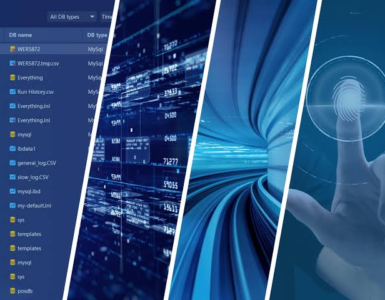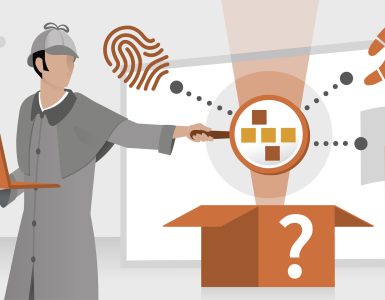Cybersecurity is the act of protecting crucial systems and sensitive data from digital attacks. It is also referred to as information technology (IT) security; cybersecurity processes are tailored to fight interior or exterior threats of an organization.
In 2020, the United States faced data breaches amounting to $8.64 million; globally, the data breaches amounted to $3.86 million. The costs were in relation to the expenses used in the discovery and response to such breaches, lost revenue and downtime cost, and the long-term damage to a business’s reputation. Cybercriminals usually aim at customers’ personal identifiable information (PII), such as addresses, names, national ID numbers, and credit card data. They then offer such information up for sale in underground digital marketplaces. Jeorpardised PII usually results in loss of customer trust, fines, and even lawsuits.
The complexity of security systems developed by various technologies and the absence of in-house expertise can widen these costs. However, organizations with sophisticated cybersecurity strategies, led by best practices and automated using advanced analytics, machine learning, and artificial intelligence (AI), can effectively combat digital attacks, lowering their life cycles and the impact of such breaches when they happen.
What Are The Cybersecurity Domains?
The best cybersecurity strategies have strong layers of protection to prevent digital attacks such as attempts to access, change, or destroy data, extorting money from organizations or users, or looking at destroying the normal operations of a business. Thus, countermeasures should address:
- Network security: A security protocol where both wireless (WiFi) and wired computer networks are protected from intruders.
- Cloud Security: Exclusive computing which encrypts cloud data in storage (at reset), and as it travels (in motion) to and from within the cloud, and while in use (while processing) to ensure customer privacy, compliance with regulatory standards, and business requirements.
- Critical infrastructure security: Protocols for the protection of computer systems, networks, and other assets relied upon by society for national security, public safety, and economic health. Organizations can seek cybersecurity assistance from the National Institute of Standards and Technology (NIST), while additional guidance may be gotten from the U.S Department of Homeland Security (DHS).
- Application security: Measures that assist in securing applications operating in the cloud and on-premises. The design of applications should include data handling measures and user authentication.
- Disaster recovery: This revolves around the tools and measures used in response to unplanned events such as power outages, natural disasters, or cybersecurity incidents, with limited disruptions of key operations.
What Dangerous Myths Cloud the Cybersecurity Environment?
Cybersecurity breaches are an increasing phenomenon worldwide, yet misconceptions continue to plague the sector; they include:
- Risks are well-known. This is not the case because, n reality, the risk surface is still widening, with thousands of new loopholes being reported in both new and old devices and applications. At the same time, human error is caused by negligent contractors or employees who unwillingly cause data compromisation.
- Cybercriminals are outsiders. In fact, digital attacks are usually orchestrated by malicious insiders working in collaboration with outside hackers or just by themselves. Such insiders may be members of organized criminal groups supported by nation-states.
- The industry is safe. Every industry has its own cybersecurity risks where cyber criminals use the basic need for communication networks within almost all government and private organizations. For instance, ransomware attacks are targeting more industries than ever before, including non-profits and local governments, and placing threats on the supply chains and major infrastructural architecture.
- Attack vectors have been subdued. Cyber attackers are finding new attack vectors every other day, including the Internet of Things (IoT) devices, operational technology, Linux systems, and cloud environments.
What Are The Common Cybersecurity Threats?
Although Cyber Security experts are trying to find out ways of dealing with security loopholes, attackers are also finding new ways of dodging defense procedures, taking advantage of emerging weaknesses, and escaping the IT notice. Current cybersecurity threats are exploiting the work-from-home environments as a result of COVID-19, new cloud services, and remote access tools. Such threats involve:
- Malware
Malware involves hostile software variants such as spyware, viruses, trojans, and worms that offer unauthorized access to cause damage to computers. Malware attacks are becoming more “fileless” and designed to evade known detection measures, such as antivirus tools that scan for hostile file attachments.
- Ransomware
Ransomware is a cyber malware category that locks down systems, data, or files and threatens to destroy or erase the data, or publicize sensitive or private information, only until the ransom is paid to the cyber attackers. Local and state governments have fallen victim to recent ransomware attacks. These institutions’ data are easier to breach compared to private organizations and thus usually pay ransoms so as to restore websites and applications relied upon by citizens.
- Insider Threats
Former or current employees, contractors, business colleagues, or anybody with access to networks or systems in the past can be regarded as an insider threat in case they exploit their access permissions. Firewalls and intrusion detection systems can hardly detect a threat from such insiders because they only focus on external attacks.
- Social Engineering or Phishing
Phishing involves social engineering tactics that manipulate users into giving up their own PII or other sensitive data. In such phishing scams, victims receive text messages or emails that appear to be from a legitimate company seeking sensitive information, such as login data or credit information. According to the Federal Bureau of Investigation (FBI), phishing was more rapid during the pandemic due to increased remote working.
Other types of cyber security threats include distributed denial-of-service (DDoS) attacks and man-in-the-middle attacks.
What Are The Crucial Cybersecurity Technologies and Best Practices
Cybersecurity technologies and best practices can assist your institutions in implementing strong cybersecurity that limits the chances of data breaching and protects crucial information systems without affecting customer or user experience.
- Security Information and Event Management (SIEM)
Examines and combines data from security events to automatically detect malicious user activities and initiate a preventive or corrective response. Currently, SIEM solutions involve advanced detection mechanisms such as artificial intelligence (AI) and behavior analytics.
- Identity and Access Management (IAM)
This refers to the roles and access privileges for every user, including conditions where they are offered or denied access privileges. IAM processes include multi-factor authentication, which requires two or more access credentials; privileged user accounts that only offer access to particular individuals only; and single sign-on that only allows users to log in once during their session without re-entering credentials.
- Comprehensive Data Security Platform
Protects crucial data over several environments, such as multi-cloud environments. They offer real-time situation on data vulnerabilities, including current monitoring that provide alerts of vulnerabilities and risks before becoming actual data breaches.






